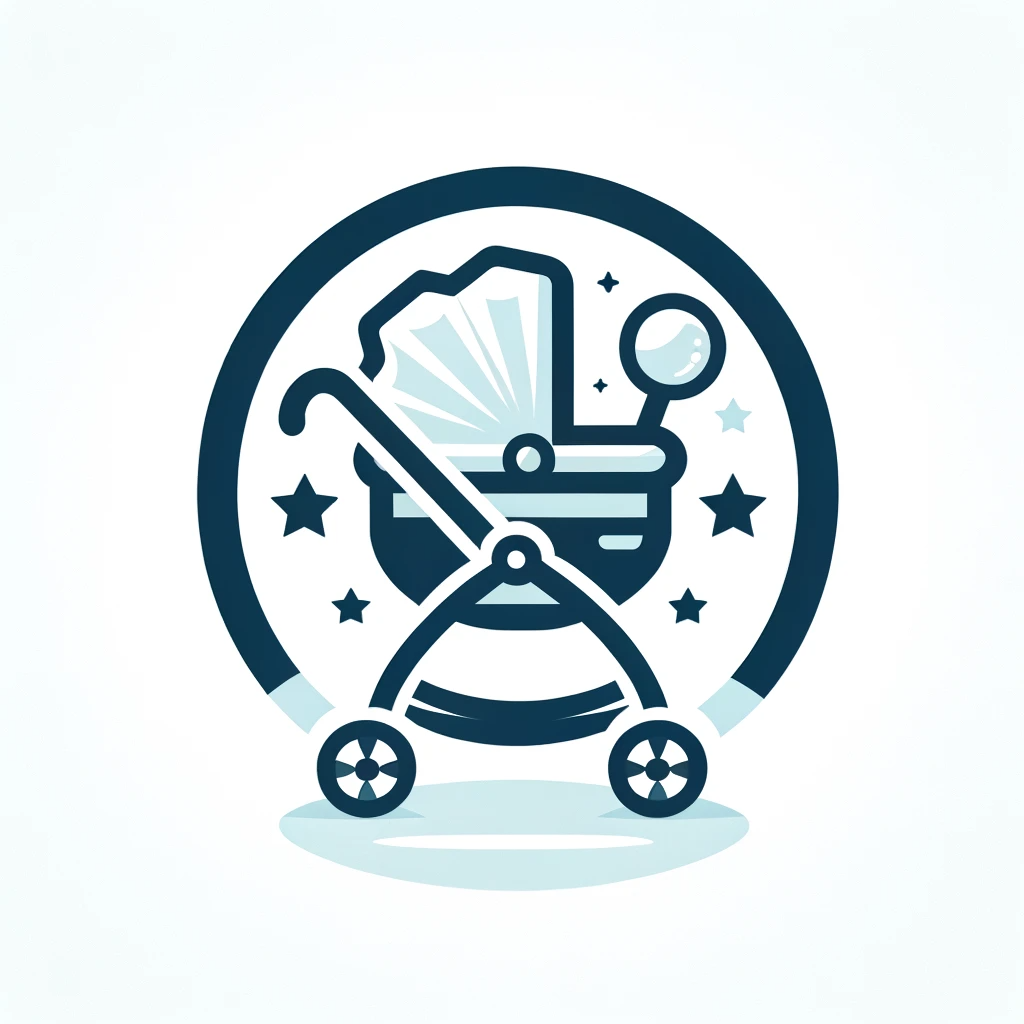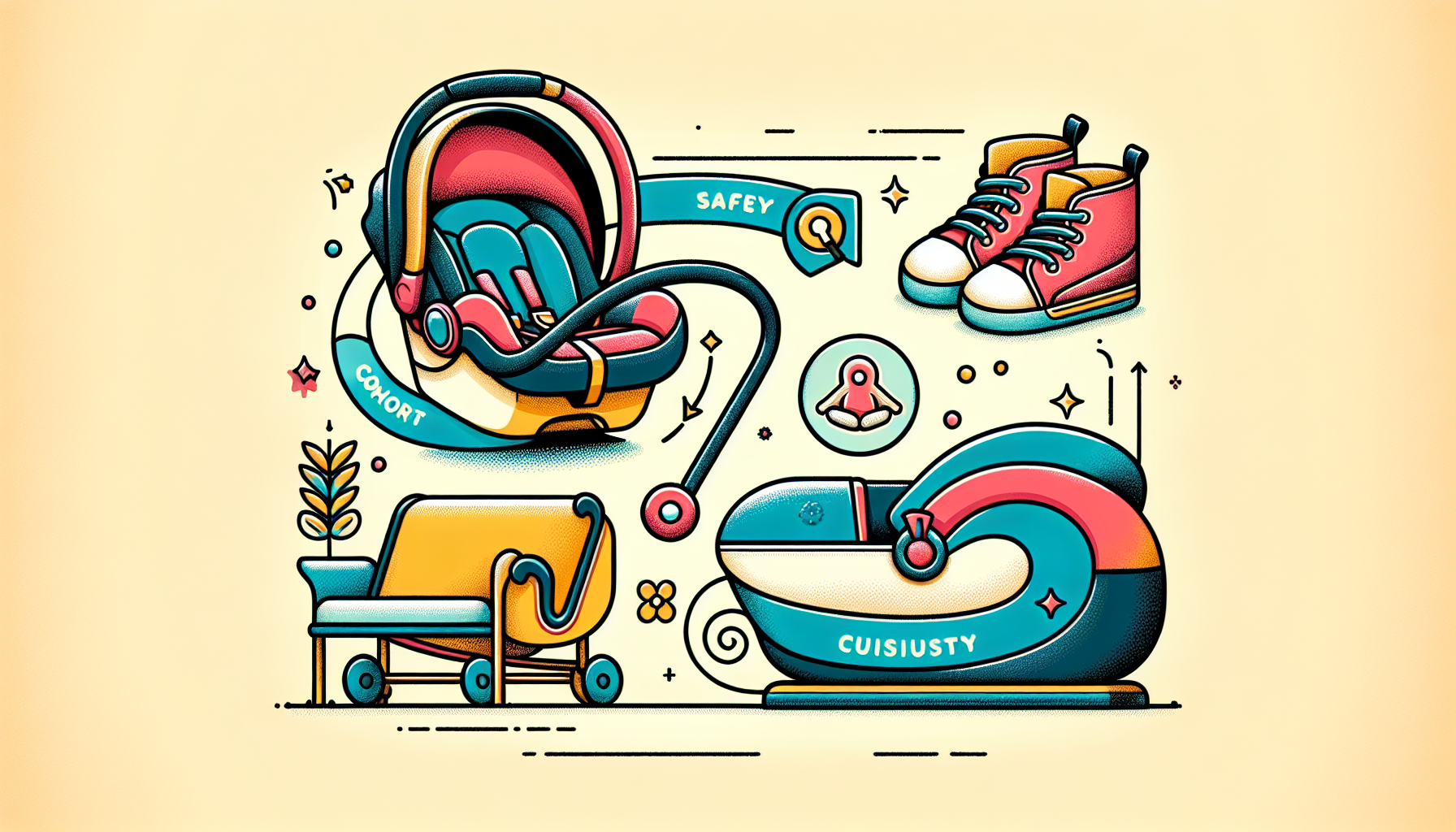Imagine being a parent on a beautiful sunny day, wanting to take your baby out for a stroll in their car seat attached to the stroller. You may be wondering, how long can you keep your little one in a car seat in a stroller? It’s an important question that many parents ponder, as the safety and comfort of our precious cargo is always our top priority. In this article, we will explore the guidelines and recommendations to ensure your baby’s well-being while enjoying a leisurely walk in the park. Let’s dive into the world of car seats and strollers, and discover the optimal duration for your baby’s travel in their cozy seat.
Importance of Safety and Comfort
The purpose of a car seat
When it comes to the safety and comfort of your baby, a car seat plays a crucial role. Car seats are designed to provide maximum protection during car rides, ensuring that your little one stays secure and well-supported. They are specifically engineered to distribute the force of impact in the event of a collision, reducing the risk of injury.
The purpose of a stroller
On the other hand, a stroller offers a convenient way for you to transport your baby while providing a comfortable and safe environment. Strollers are designed with features such as padded seats, adjustable harnesses, and sturdy frames to ensure your baby’s comfort and security. They also offer additional storage space for your baby essentials, making outings with your little one easier and more enjoyable.
Considerations for Baby’s Well-being
When it comes to choosing between a car seat and a stroller for your baby, it is important to prioritize their well-being. Safety should be the primary concern, followed closely by comfort. Remember that your baby spends a significant amount of time in these devices, so it is crucial to consider their physical development, limitations, and overall happiness.
Age and Time Guidelines
Newborns and Infants
For newborns and infants, it is generally recommended to limit the amount of time they spend in a car seat or stroller to no more than 30-60 minutes at a time. Their delicate bodies are still developing, and prolonged periods in these devices can have negative effects on their physical well-being. It is essential to prioritize frequent breaks and allow your baby to move freely.
Six Months and Older
As your baby grows older and gains more control over their muscles and joints, the duration they can spend in a car seat or stroller can be extended. However, it is still essential to consider their comfort and prioritize regular breaks to avoid any discomfort or potential health issues.
Nap Duration
When it comes to allowing your baby to nap in a car seat or stroller, it is recommended to monitor the duration and limit it to the shortest possible time. While napping in a car seat or stroller may seem convenient, it is important to prioritize their well-being and create a more conducive sleeping environment, such as a crib or bassinet.
Developmental Factors
Spinal Development
Babies’ spines are still developing and are highly susceptible to potential harm or misalignment. Prolonged periods in a car seat or stroller can put excessive pressure on their spine, leading to discomfort or even potential developmental issues. It is crucial to prioritize their spinal health by limiting the time spent in these devices and ensuring proper posture and support.
Muscle and Joint Health
Babies’ muscles and joints are in the early stages of development and need to be nurtured. Spending extended periods in a car seat or stroller can restrict their movement and limit muscle engagement. It is important to prioritize their muscle and joint health by allowing them ample opportunities for movement and exploration outside of these devices.
Neck and Head Control
Babies’ neck and head control also play a significant role in their overall comfort and well-being. When using a car seat or stroller, it is crucial to ensure that their neck and head are properly supported to prevent any strain or discomfort. Choosing devices with adjustable headrests or additional support can greatly contribute to their comfort and safety.
Physical Limitations
Pressure Points
Extended periods in a car seat or stroller can lead to the development of pressure points, particularly on certain parts of your baby’s body. These pressure points can cause discomfort and potentially even skin irritation. Regular breaks and redistributing the pressure by changing positions or using additional padding can help alleviate these concerns.
Blood Circulation
Prolonged sitting in a car seat or stroller can also impact your baby’s blood circulation. Babies have sensitive circulatory systems, and restricting movement for an extended period can impede proper blood flow. It is important to prioritize their circulation by ensuring regular breaks and allowing them to stretch and move their limbs.
Breathing Difficulties
Another concern when it comes to prolonged use of a car seat or stroller is the potential for breathing difficulties. The position in a car seat or stroller can compress your baby’s chest and restrict proper breathing. Regular breaks and ensuring that your baby is in an upright position can mitigate these concerns and prioritize their respiratory health.
Awareness of Baby’s Comfort
Observe Baby’s Behavior
While guidelines and recommendations can provide a general framework, it is essential to be aware of your baby’s individual needs and comfort. Pay close attention to their behavior while in a car seat or stroller. If your baby appears fussy, restless, or uncomfortable, it may be a sign that they need a break or a change in positioning.
Check for Discomfort
Regularly check for signs of discomfort such as redness, marks, or imprints on your baby’s body. These can indicate that the car seat or stroller is not providing adequate support or may not be the right fit for your little one. Adjustments can be made to ensure their comfort and well-being.
Avoid Excessive Time
To prioritize your baby’s comfort and overall well-being, it is important to avoid excessive time in a car seat or stroller. While these devices are convenient and practical, it is crucial to strike a balance and provide your baby with opportunities for exploration, movement, and interaction outside of these confined spaces.
Alternatives to Car Seat and Stroller
Baby Carriers
One popular alternative to car seats and strollers is the use of baby carriers. Baby carriers allow you to keep your baby close to you while providing them with the freedom of movement and proper support. They distribute your baby’s weight evenly and often offer ergonomic designs to ensure maximum comfort for both you and your little one.
Baby Slings
Similar to baby carriers, baby slings offer a hands-free option for carrying your baby. Slings provide a cozy and secure environment while allowing your baby to experience the world from a more elevated position. They are particularly beneficial for promoting bonding and closeness between you and your baby.
Baby Wraps
Baby wraps are another alternative that provides a snuggled and secure environment for your baby. Wraps are made from soft, stretchy fabric that can be wrapped securely around your body, keeping your baby close and comfortable. They offer versatility and adaptability to fit your baby’s changing needs.
Safety Recommendations
Follow Manufacturer’s Guidelines
When using any baby gear, it is important to carefully read and follow the manufacturer’s guidelines and instructions. Each device may have specific recommendations for usage, weight limits, and safety precautions. By adhering to these guidelines, you can ensure the safety and well-being of your baby.
Do Not Leave Unattended
Regardless of the device you choose, it is crucial to never leave your baby unattended. Babies can quickly wriggle or move, posing a risk of injury or suffocation. Always keep a close eye on your baby and be mindful of their comfort and safety.
Keep an Eye on Baby’s Position
Regularly check your baby’s position and adjust as needed. Make sure that their head, neck, and spine are properly supported and aligned. Pay attention to any signs of discomfort or distress and take prompt action to ensure their well-being.
Expert Opinions on Duration
American Academy of Pediatrics
The American Academy of Pediatrics (AAP) recommends limiting the time a baby spends in a car seat, stroller, or other restrictive devices to no more than one hour at a time. This guideline aligns with the importance of avoiding prolonged periods of restricted movement and the potential negative effects on a baby’s development.
Babywearing Consultants
Babywearing consultants are experts in the field of baby carriers, wraps, and slings. They often emphasize the benefits of keeping babies close while encouraging frequent breaks. Babywearing promotes bonding, allows for easy breastfeeding, and supports healthy attachment between caregivers and their babies.
Pediatricians’ Perspectives
Pediatricians generally stress the importance of maintaining a balance between using car seats, strollers, and alternative baby-wearing devices. They recommend prioritizing the safety, comfort, and well-being of the baby by limiting time in car seats and strollers and ensuring regular breaks for movement and exploration.
Tips to Ensure Safety and Comfort
Choose Ergonomic Car Seats and Strollers
When selecting a car seat or stroller, opt for models that prioritize ergonomics and provide optimal support for your baby’s body. Look for adjustable features, such as headrests and harnesses, and ensure that the device is suitable for your baby’s age and size. Ergonomic design can help minimize discomfort and support healthy physical development.
Take Regular Breaks
Implementing regular breaks during car rides or outings with your baby is essential. Plan your trips with breaks in mind, allowing your baby to stretch, move, and engage in new surroundings. These breaks not only prioritize your baby’s comfort but also provide valuable opportunities for sensory stimulation and development.
Maintain Ideal Climate Conditions
Ensure that your baby is comfortable and safe by maintaining ideal climate conditions. Make sure the car seat or stroller is not exposed to direct sunlight or extreme temperatures. Use sunshades, blankets, or other accessories to control the environment and provide optimal comfort for your little one.
Conclusion
The safety and comfort of your baby should always be the top priority. Car seats and strollers are essential tools for transportation, but it is important to use them mindfully and responsibly. By understanding the guidelines, developmental factors, and alternatives available, you can make informed decisions that prioritize your baby’s well-being. Remember to observe your baby’s behavior, check for discomfort, and provide adequate breaks and opportunities for movement. By doing so, you can ensure that your baby remains safe, comfortable, and happy during car rides and outings.

